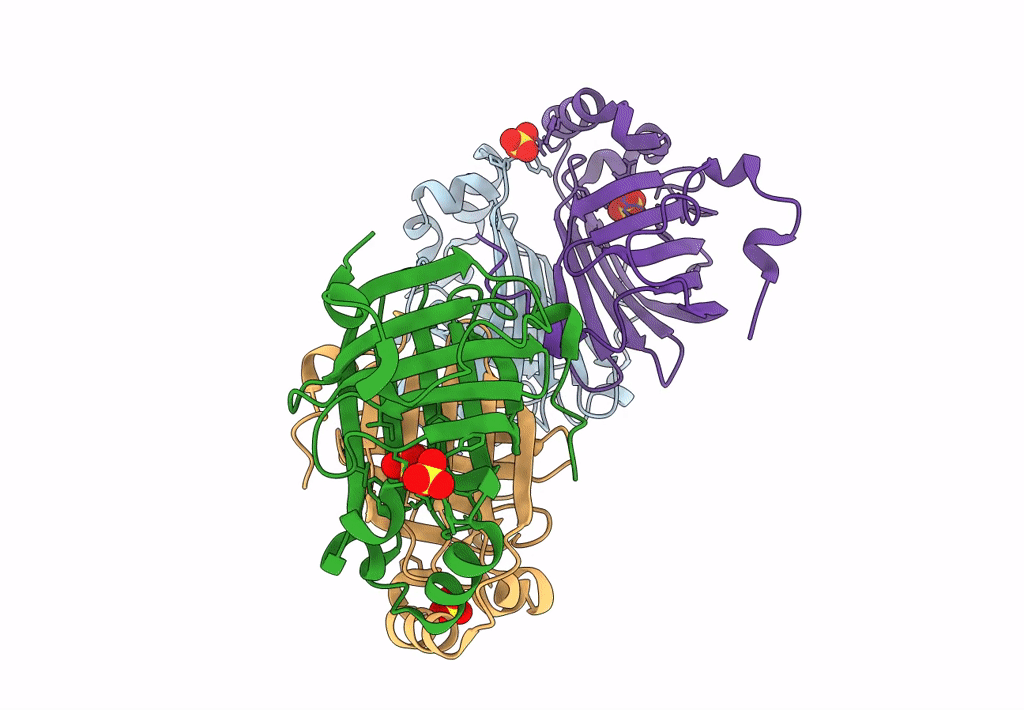
Deposition Date
2023-01-11
Release Date
2023-07-19
Last Version Date
2025-01-15
Entry Detail
PDB ID:
8C66
Keywords:
Title:
Structure of the Reconstructed Ancestor of Phenolic Acid Decarboxylase AncPAD55
Biological Source:
Source Organism:
synthetic construct (Taxon ID: 32630)
Host Organism:
Method Details:
Experimental Method:
Resolution:
1.60 Å
R-Value Free:
0.27
R-Value Work:
0.22
Space Group:
P 1 21 1


